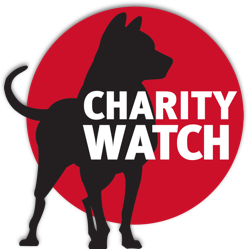The Truth About Prospect Fundraising
Dec 01, 1997
The following is a solicitation letter–for new donors from a fictitious charity–that a fundraiser would write only after swallowing a dose of truth serum:
Dear Potential Donor:
Greetings from the Save the Orangutang Foundation. Please send us a check for $25. If you respond to this solicitation, none of your money will be spent on the Foundation’s Orangutang protection programs–it will all be spent on this mailing in your hand.
Why? Because 99% of the 100,000 people that we send this solicitation to (at a cost of $35,000) will toss it in the garbage. The one percent (or 1,000 people) that do respond with a $25 check will bring in only $25,000, which is $10,000 less than this mailing. But that’s okay because during the two years following the receipt of the first letter we plan to send at least eight more solicitations to the 1,000 people that did respond. Based on our experience, we figure that a portion of them will contribute $20,500 over these two years. Since it will cost us less than $4,000 to solicit them, we will have about $16,700 left to spend on Orangutangs and general Foundation administration.
After two years, there will only be about 400 people (out of the original 100,000) who will respond to our repeated requests for funds. In the third year we can solicit them five times, at a cost of only $1,000, and expect to have net proceeds of about $7,400.
Though we will not be able to save any Orangutangs with your first $25 contribution, if you and 999 other people send us another check or two, we will make $14,000 in net income by raising $54,000 in contributions and incurring $40,000 in fundraising costs.
Thank you for taking the time to understand the economics of direct-mail fundraising.
Sincerely,
Charlie “Orange” Tang
Executive Director
The numbers used in this letter were provided by a professional fundraising company at a recent nonprofit conference as an example of typical returns for new donor acquisition campaigns that are conducted by direct mail. It is costing the Orangutang charity $40,000 to raise $54,000 over three years. In other words, for every $100 contributed, $74 is taken out in fundraising costs. Professional fund-raising companies consider this a good deal for charities. They refer to the $10,000 loss on the initial 100,000 piece mailing as an investment and the $14,000 in net income as a whopping 240% return on investment (ROI). (ROI is calculated by dividing $24,000 in total contributions by the $10,000 investment in the initial mailing.)
This may be a good business opportunity for a charity and its professional fundraising company, but donors are not likely to be thrilled to learn that after three years only 26% of their contributions will be available for charitable purposes.
A donor is a charity’s “cash cow.” Just as a dairy farmer will spend a lot of money to buy a cow that can be milked over many years to come, a charity will spend a lot of money to acquire donors that will continue to send checks. It is very expensive for a charity to quickly acquire new financial supporters. A charity can reduce its fundraising expenses by concentrating on its current donors and those who already expressed an interest in the charity’s work.
When a charity that you have never supported or contacted is soliciting you through the mail or by phone, you should realize that most of the money sent in response to the solicitation will likely go to the cost of the solicitation campaign. Only through resolicitations, and in some cases by selling your name to other charities and businesses, will there be money left for charitable purposes. AIP recommends that you continue to respond to the worthy charities that you have been supporting and that you expand your universe of charitable giving by seeking out groups that are not seeking you out. By giving to groups based on your own research and before you are asked to do so in an expensive solicitation campaign, you can feel more confident that your contribution will be spent on charitable purposes.
